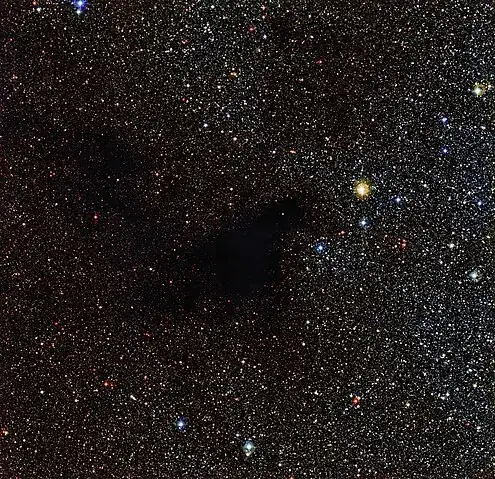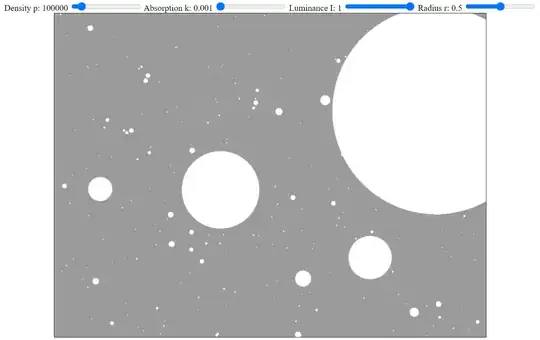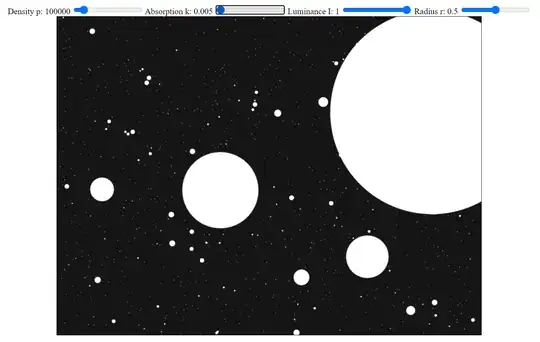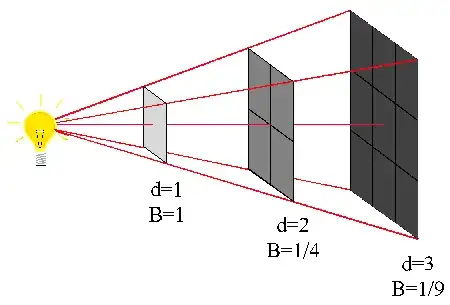Answers ignoring the effect of interstellar matter, modeled here by the Beer-Lambert attenuation law, are incorrect. The assertion that Olbers's Paradox proves a finite size of the universe is severely anachronistic and embarassingly outdated.
Olbers himself disregarded this law as it was not documented with respect to stellar light until 1930, more than a century after he proposed this supposed paradox as a thought experiment. Why didn't they notice it before? Well, they couldn't see it, so many assumed it was not there. It is simply that there is indeed non-luminous material between stars, in seemingly "empty" space, and that light intensity is known to decrease according to an exponential decay curve as it travels through such matter. Those arguing otherwise are asking us to presuppose the non-existence of planets, moons, asteroids, dust and gas (from which the stars themselves are said to form), nebulae, dark matter, etc.

I have written a basic simulation to validate the effects of non-luminous matter quantitatively and qualitatively. Code here. It directly applies the exponential decay law by assuming a uniform random density of stars and a uniform density of non-luminous matter throughout space.
The simulation even cheats massively in favor of Olbers's Paradox by modeling the infinite backdrop of stars at varying distances as a purely luminous wall of light at a fixed, finite and even shortest possible distance beyond the foreground model of direct sampling. This means we have a strict theoretical upper bound on the total light emanating from distant stars. The density of non-luminous matter is controllable as a parameter p. The simulation shows that for even very small values of p, a purely luminous wall would be practically invisible, or else be completely indistinguishable from cosmic microwave background radiation (interstellar attenuation not only decreases apparent intensity, it also induces reddening).
In other words, Olbers's thought experiment would fail to falsify even the hypothetical existence of a contiguous sphere of light as luminous as the surface of the brightest star enveloping the entire visible portion of the universe. It can say nothing about what is beyond the photons that reach us.
If one sets p=0, the entire field of view is indeed saturated by pure, contiguous starlight under this simulation. But for any non-infinitesimal density p of attenuating matter, the visualization -- and the mathematical solution for expected light intensity over all points in space--converges sharply towards a model that perfectly resembles what we see in our night sky, regardless of all other parameter settings.
In the following two images, the absorption value is increased only slightly, starting as close as the simulation allows to zero at first:


In both images, there is a perfectly bright wall of simulated stars a short, fixed distance away from the observer. Radiation from that wall leaks and is visible as a uniform grey background when the simulated wall is very close and the density of attenuating matter approaches zero, but if the wall of light is slightly more distant or the density of attenuating matter is only slightly increased, the background approaches pitch black, despite there still being an infinite number of perfectly bright stars intersecting every possible line of sight.
In case you think this idea is flamingly absurd, that even a small amount of matter between stars can block nearly all of the light from them, remember that despite how brightly the Sun shines at noonday and how close it is to the Earth, you can block almost all of that light using a thin cardboard cereal box or a parasol consisting of cloth a couple millimeters thick. This gives you an idea of how effective exponential attenuation is. Can there not be the equivalent matter of one millimeter of cardboard between you and a star 3 billion light years away? If not then what are stars made of?



